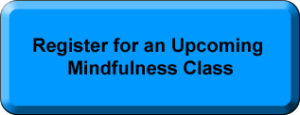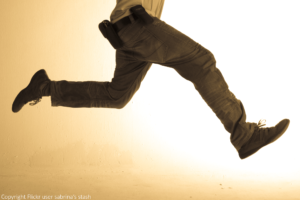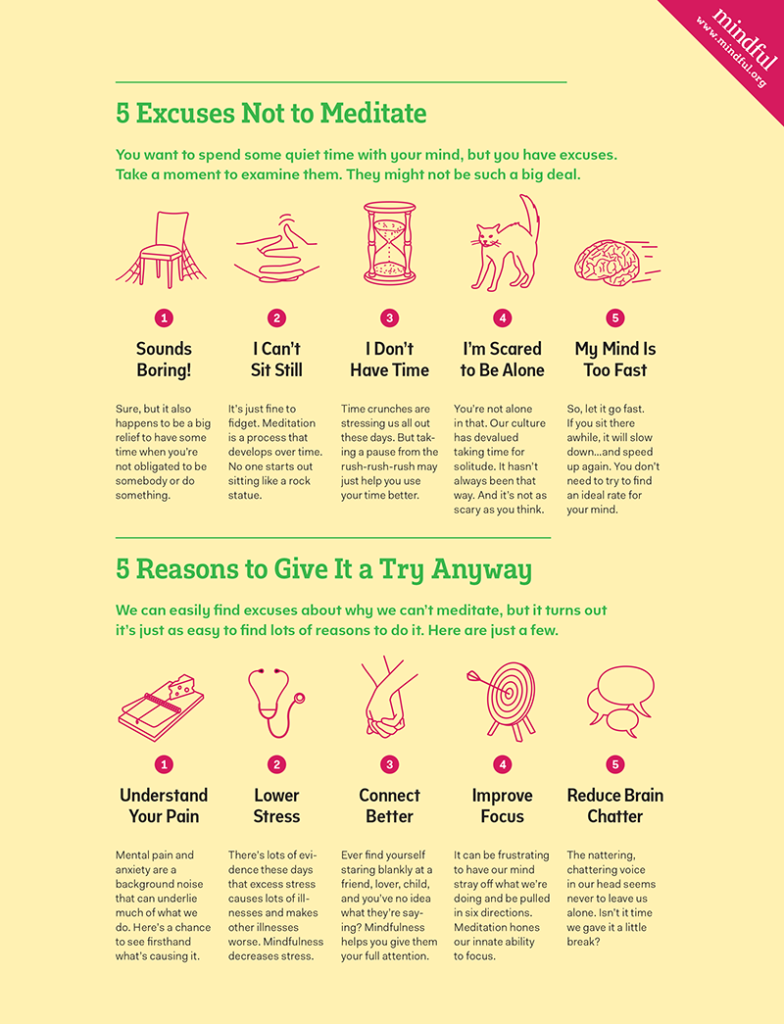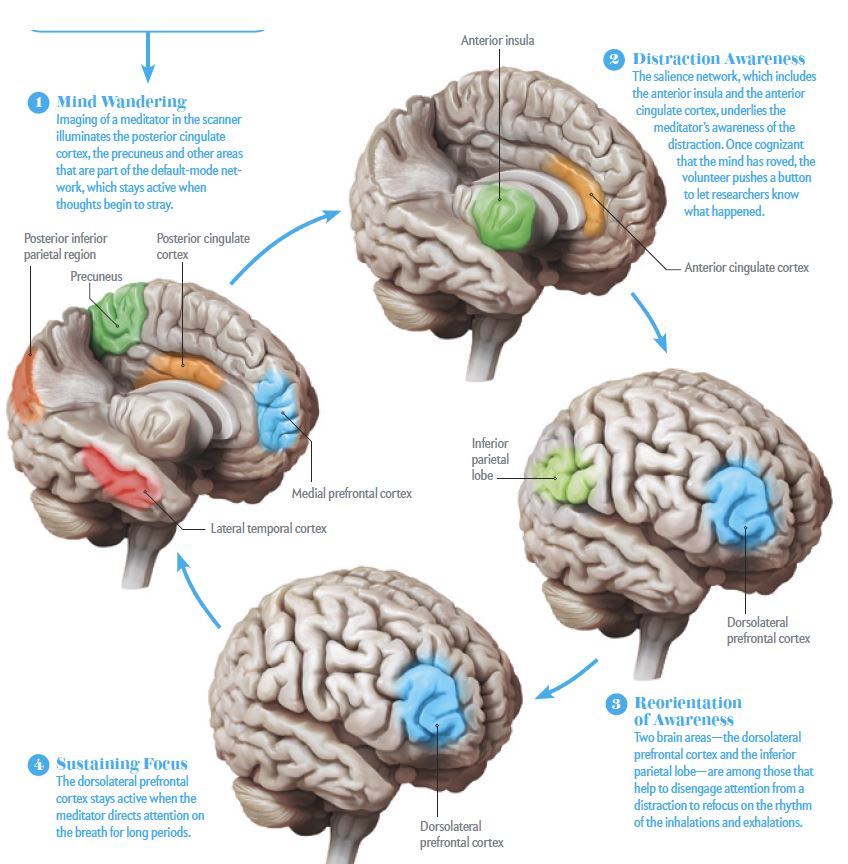
So many Thoughts
“There is nothing good or
bad, but thinking makes it so.”
-William Shakespeare
Our thoughts create our reality. The way we think conditions our behavior and leads to results in the world. So the types of thoughts we tend to think, believe, and act on have an enormous influence on our personal destinies, on whether or not we’ll achieve emotional resilience, career success, and happiness in relationships. Yet there is a common misconception that one of the goals of meditation is to rid ourselves of our thoughts and have a clear, empty mind. But mindfulness meditation is not about getting rid of our thoughts. It’s about learning to see clearly into the nature of our thoughts and begin to relate to our thinking differently.
Here are some points to keep in mind when exploring how to mindfully work with your thoughts:
95%
It’s been said that approximately 95% of the 60,000 thoughts we have each day are the same thoughts we had yesterday. Which means that the vast majority of our thoughts are not original and not particularly useful. And because we are hard-wired with a negativity bias, many of those thoughts tend to be of a ruminative, obsessive, and dark nature, forming the basis for our tendency to catastrophize and feel overwhelmed. It’s summed up in the famous quote from Mark Twain: “I am an old man and have known a great many troubles. But most of them never happened.”
Distorted Thinking
Many of these repetitive thoughts form narrative patterns that psychologists have termed thinking distortions. If left unexamined, these thinking distortions can color our perception of the world and others. Here’s an example: You’re walking down the street and you see someone you know across the street. You notice the person catch your eye and you wave, but the person doesn’t respond at all, then disappears into a store. Your first thought is, “Oh my god, so and so just ignored me. What did I do?” This particular thinking distortion is known as reading minds. It’s the idea that we know exactly what people are thinking and what must be motivating their behavior. In the above example, though, are we even sure that the person recognized us? So much suffering is caused when we let these distorted thoughts control us.
And this points to another problem with our thoughts. Which is, we tend to believe them. Think about that for a minute. If we have 60,000 thoughts a day and most of them are repetitive, not helpful, or even negative, how does it effect our experience of being alive? If we believe our thoughts and don’t even question them, then it means we’ll tend to act in accordance with our thoughts even if they are wildly inaccurate. By failing to look at our thinking critically, it means that we are literally at the mercy of our unconscious patterns and habitual tendencies.
How Mindfulness Helps
When you try to focus on your breathing for any length of time, you’ll notice that things get in the way of your focus. Many of these “things” are thoughts – plans, memories, fantasies, inner dialogues. The more we try to focus on the breath, in fact, the more we see these thoughts. As we continue to practice, it is inevitable that at some point we’ll start noticing the patterns of thinking that our mind produces: the desires, fears, hopes, and judgments we make about ourselves, the world, and others that influences our actions – and the outcomes of our lives.
Many of these habit patterns were unknown to us before we became meditators. As we deepen our practice, though, we get to know ourselves well. Mindfulness of thought patterns helps us see two crucial aspects of thoughts that lack of mindfulness will shield us from seeing: 1) thoughts are impermanent and insubstantial, and 2) certain thoughts lead to stress and suffering while others lead to greater ease and well-being. Mindfulness helps us see that thoughts are like clouds passing in the sky. For a time they seem solid and steady, but like clouds they are just passing and will actually not last. Have you ever been able to make your thoughts last? When we see that our thoughts are impermanent, we begin to recognize that thoughts are actually just events in consciousness, not facts. I’ll repeat that: thoughts are events in consciousness, not facts. This perspective provides a critical distance that allows us to see thoughts without necessarily believing them or acting on them. By seeing thoughts in this way, we begin to develop cognitive freedom and beginner’s mind.
The act of sitting and noticing our thought patterns over and over again gives us the space to digest thoughts before believing them or acting on them. Sometimes thoughts give rise to emotions, or act as a response to emotions, so when we are mindful of our thoughts we are also aware of the emotional underpinnings that influence us. By observing our thoughts rather than reacting to them we can understand which thoughts, if acted upon, will lead to suffering, and which thoughts will support a healthy respsonsiveness.
Mindfulness teaches us the humble lesson that we are not really in control of our thoughts. But it also teaches us the hopeful lesson that we are in control of how we respond to them.

 You probably know the feeling. It’s after lunch and the day seems to drag on and on. Your energy level is low, and you can’t concentrate on your work. You aren’t getting anything done, and there doesn’t seem to be anything you can do about it. You feel like taking a nap, but of course that’s not possible at the office. The afternoon doldrums are a well-known challenge to the work day, with some 28% of employees reporting falling asleep or getting very sleepy at work, according to the National Sleep Foundation. But there are ways of working with this listlessness. Here are five ways to manage your energy during the afternoon:
You probably know the feeling. It’s after lunch and the day seems to drag on and on. Your energy level is low, and you can’t concentrate on your work. You aren’t getting anything done, and there doesn’t seem to be anything you can do about it. You feel like taking a nap, but of course that’s not possible at the office. The afternoon doldrums are a well-known challenge to the work day, with some 28% of employees reporting falling asleep or getting very sleepy at work, according to the National Sleep Foundation. But there are ways of working with this listlessness. Here are five ways to manage your energy during the afternoon: Many meditation teachers say that there is no wrong way to meditate. That showing up and doing the practice is what’s important. Having said that, the following list of common mistakes or misconceptions about meditation keep showing up in my teaching with students. They are:
Many meditation teachers say that there is no wrong way to meditate. That showing up and doing the practice is what’s important. Having said that, the following list of common mistakes or misconceptions about meditation keep showing up in my teaching with students. They are:
 Rushing about seems to be the default way we live our lives. Interestingly enough, because we often rush ourselves, it’s hard to notice when other people rush. But during those times when we are more relaxed, or forced to stop, the signs of rushing are everywhere. On our roads and freeways, at work, in stores and on sidewalks, people seem to have just one speed. The speed of doing things fast. In fact, it can be quite jarring to see someone moving slowly, so accustomed are we to moving at a certain pace. How many times have you been parked at a red light and, as the light turns green, someone slowly crosses the street in front of your car? Chances are that was not a pleasant experience for you.
Rushing about seems to be the default way we live our lives. Interestingly enough, because we often rush ourselves, it’s hard to notice when other people rush. But during those times when we are more relaxed, or forced to stop, the signs of rushing are everywhere. On our roads and freeways, at work, in stores and on sidewalks, people seem to have just one speed. The speed of doing things fast. In fact, it can be quite jarring to see someone moving slowly, so accustomed are we to moving at a certain pace. How many times have you been parked at a red light and, as the light turns green, someone slowly crosses the street in front of your car? Chances are that was not a pleasant experience for you.
 When you’re working really hard and it’s time to take a break, what do you do? What does it mean to take a break? Is a break walking away from your desk while checking out your phone for messages, visiting Facebook for updates from friends, or browsing your favorite news blog? Is taking a break eating at your desk while web browsing? Or is it visiting a colleague to have a business conversation? Many people believe they have to be productive all the time, so even when they take a “break” they have to do something potentially useful. (A student of mine once confessed that when she brushed her teeth at night, she was texting friends with her free hand. She explained that brushing her teeth wasn’t accomplishing enough!) The problem with these kinds of breaks is that they keep the mind focused on conceptual experiences. But a true break means we are giving the brain a break from concepts. Brain scans have shown that when people are focused on concepts – doing work, for example – many regions of the bran light up. The brain is expending a lot of energy when we are doing things that take conceptual focus. When we expend this kind of energy without pause, hour after hour, it can be quite exhausting. When we are exhausted, our performance suffers, our inner sense of well-being declines, and our health can suffer as well. Burnout and lack of engagement often follow.
When you’re working really hard and it’s time to take a break, what do you do? What does it mean to take a break? Is a break walking away from your desk while checking out your phone for messages, visiting Facebook for updates from friends, or browsing your favorite news blog? Is taking a break eating at your desk while web browsing? Or is it visiting a colleague to have a business conversation? Many people believe they have to be productive all the time, so even when they take a “break” they have to do something potentially useful. (A student of mine once confessed that when she brushed her teeth at night, she was texting friends with her free hand. She explained that brushing her teeth wasn’t accomplishing enough!) The problem with these kinds of breaks is that they keep the mind focused on conceptual experiences. But a true break means we are giving the brain a break from concepts. Brain scans have shown that when people are focused on concepts – doing work, for example – many regions of the bran light up. The brain is expending a lot of energy when we are doing things that take conceptual focus. When we expend this kind of energy without pause, hour after hour, it can be quite exhausting. When we are exhausted, our performance suffers, our inner sense of well-being declines, and our health can suffer as well. Burnout and lack of engagement often follow.


 We are in communication with people all the time. We have conversations with colleagues at work, with our mechanic, with our spouses and kids, and we convey messages both verbally and non-verbally. But how often are we really being present while communicating? Because relationships can be stressful, it’s important to bring mindful awareness to the domain of communication.
We are in communication with people all the time. We have conversations with colleagues at work, with our mechanic, with our spouses and kids, and we convey messages both verbally and non-verbally. But how often are we really being present while communicating? Because relationships can be stressful, it’s important to bring mindful awareness to the domain of communication.




 There is a trend towards minimalism in the dissemination of mindfulness. One does not really need practice mindfulness in an intensive way, we are told. We can do it in small digestible chunks. Some people suggest just 60 seconds of mindfulness practice. Or even one second. There are some that even suggest that formal practice periods are not needed at all – since we are already mindful now and then, the trick is to simply remember to be aware of what we are doing during our regular activities. If we could only remember to be aware more frequently, voila’ – we would be more mindful! I was struck by the following quote from a recent piece in the Harvard Business Review:
There is a trend towards minimalism in the dissemination of mindfulness. One does not really need practice mindfulness in an intensive way, we are told. We can do it in small digestible chunks. Some people suggest just 60 seconds of mindfulness practice. Or even one second. There are some that even suggest that formal practice periods are not needed at all – since we are already mindful now and then, the trick is to simply remember to be aware of what we are doing during our regular activities. If we could only remember to be aware more frequently, voila’ – we would be more mindful! I was struck by the following quote from a recent piece in the Harvard Business Review:



